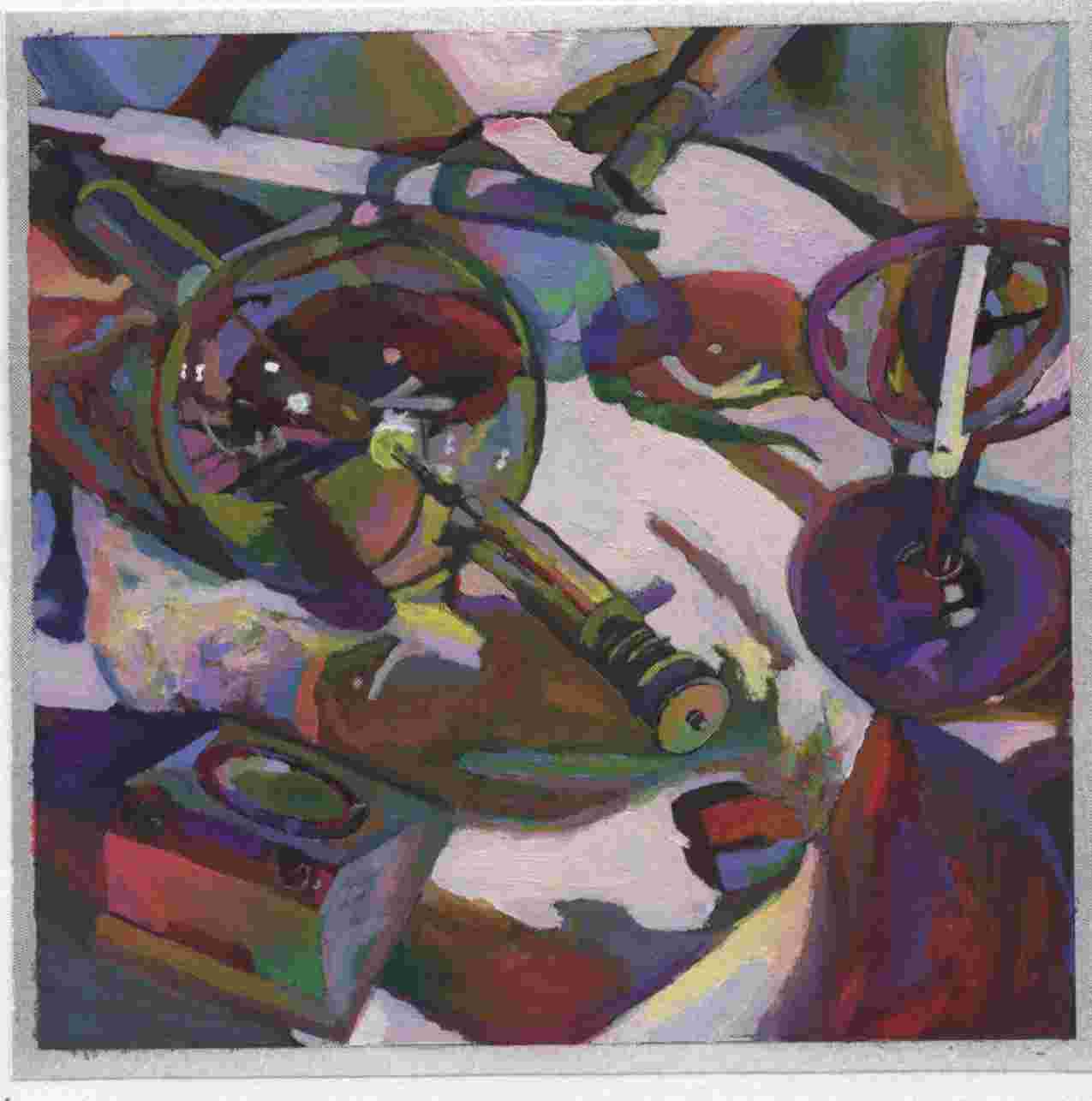

This is one of the homework assignments in Intermediate Illustration taught by John Clapp. After doing a black and white rendering of a photograph, we were assigned to paint a series of color compositions in a variety of styles, as described below.
This first one is my favorite of the compositions. The idea here was to use as much color everywhere (Crazy Quilt style) but to keep the proper value scale. You may judge the values from the black and white scan of the same painting, shown on the left.


Two other paintings that I think came out well are Limited Palette (below, left) and the Half Saturation (below, right).
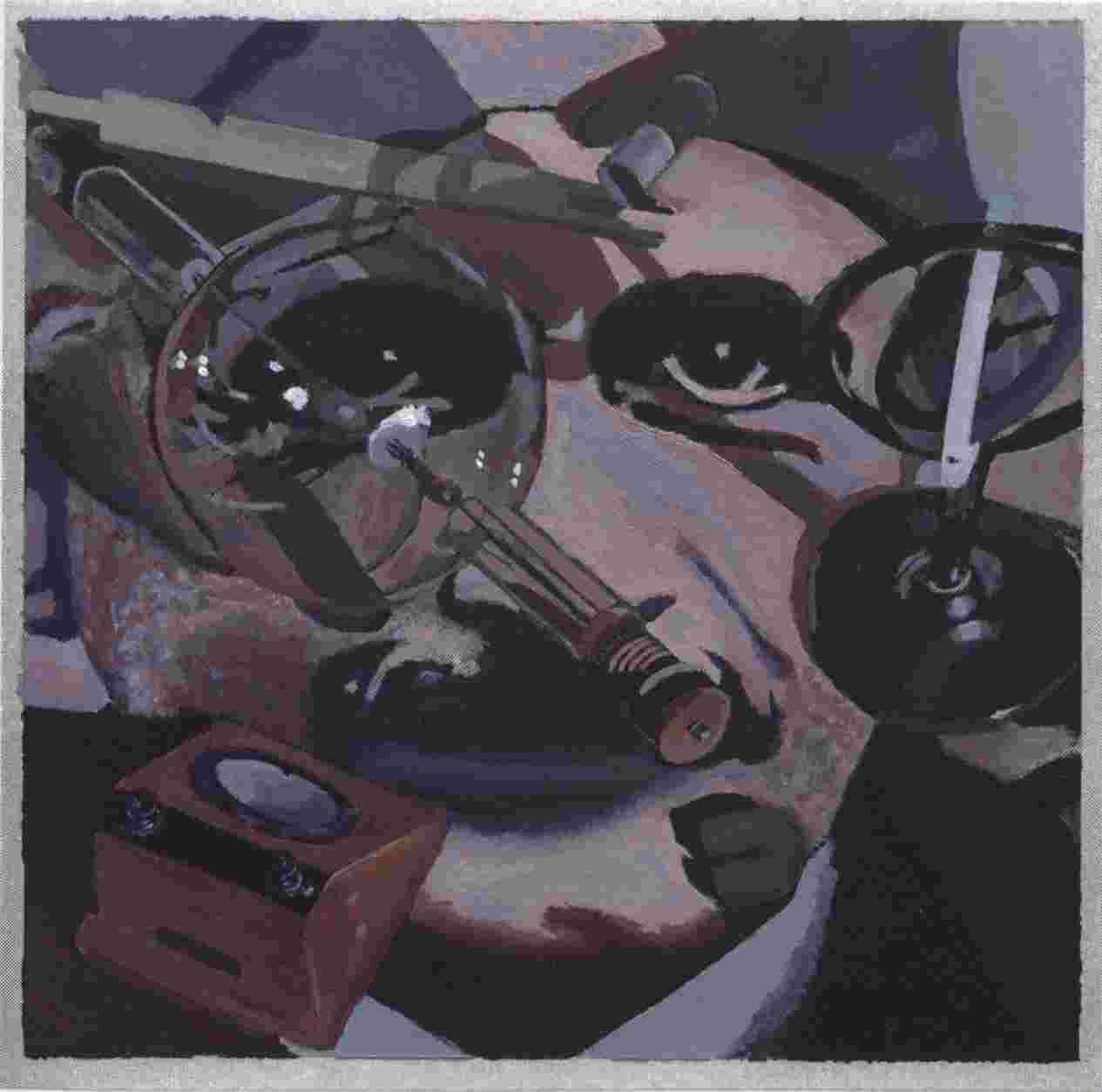
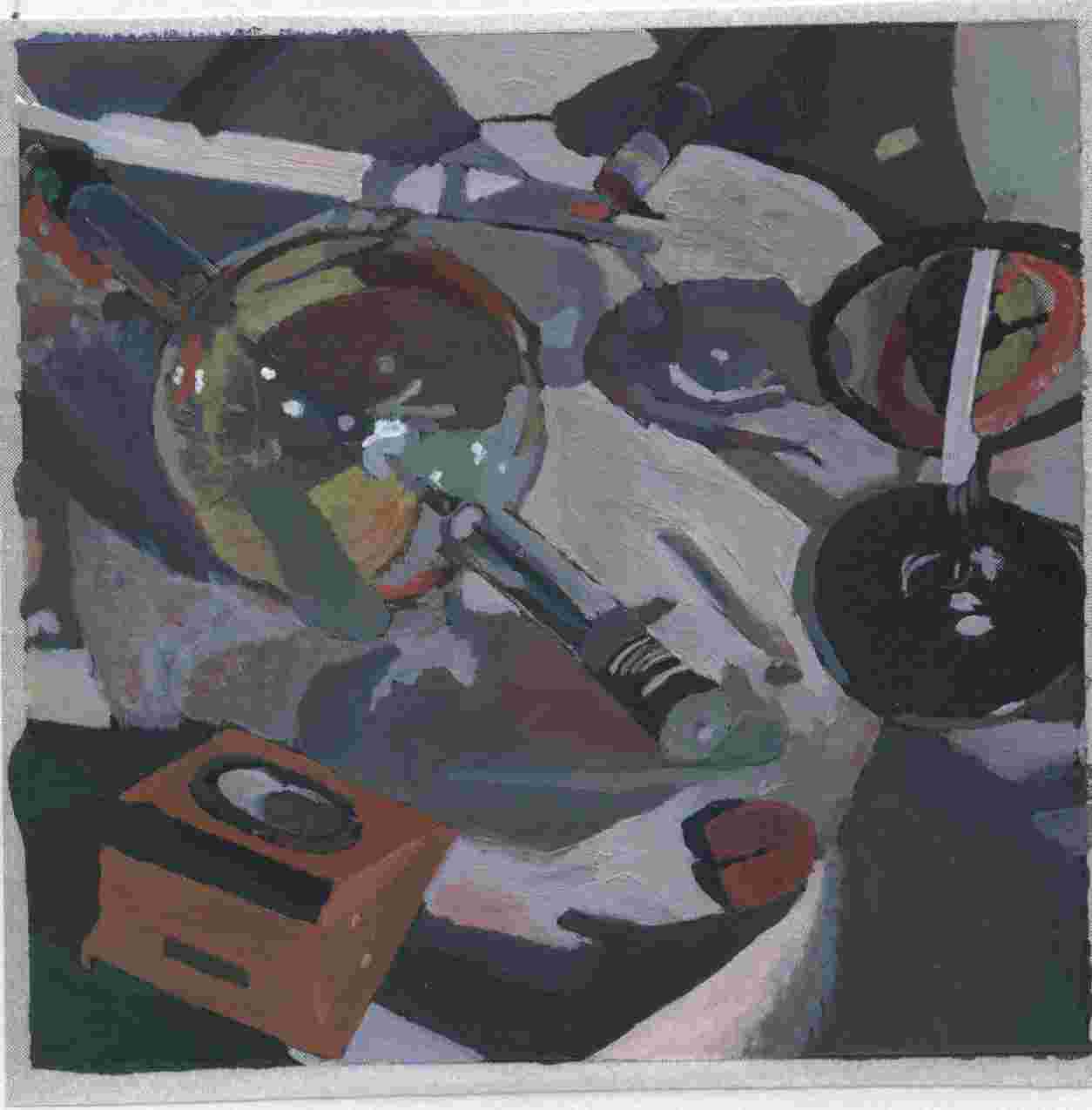
The next two comps are Monochromatic (below, left) and Analogous (below, right), which is nearly monochromatic.
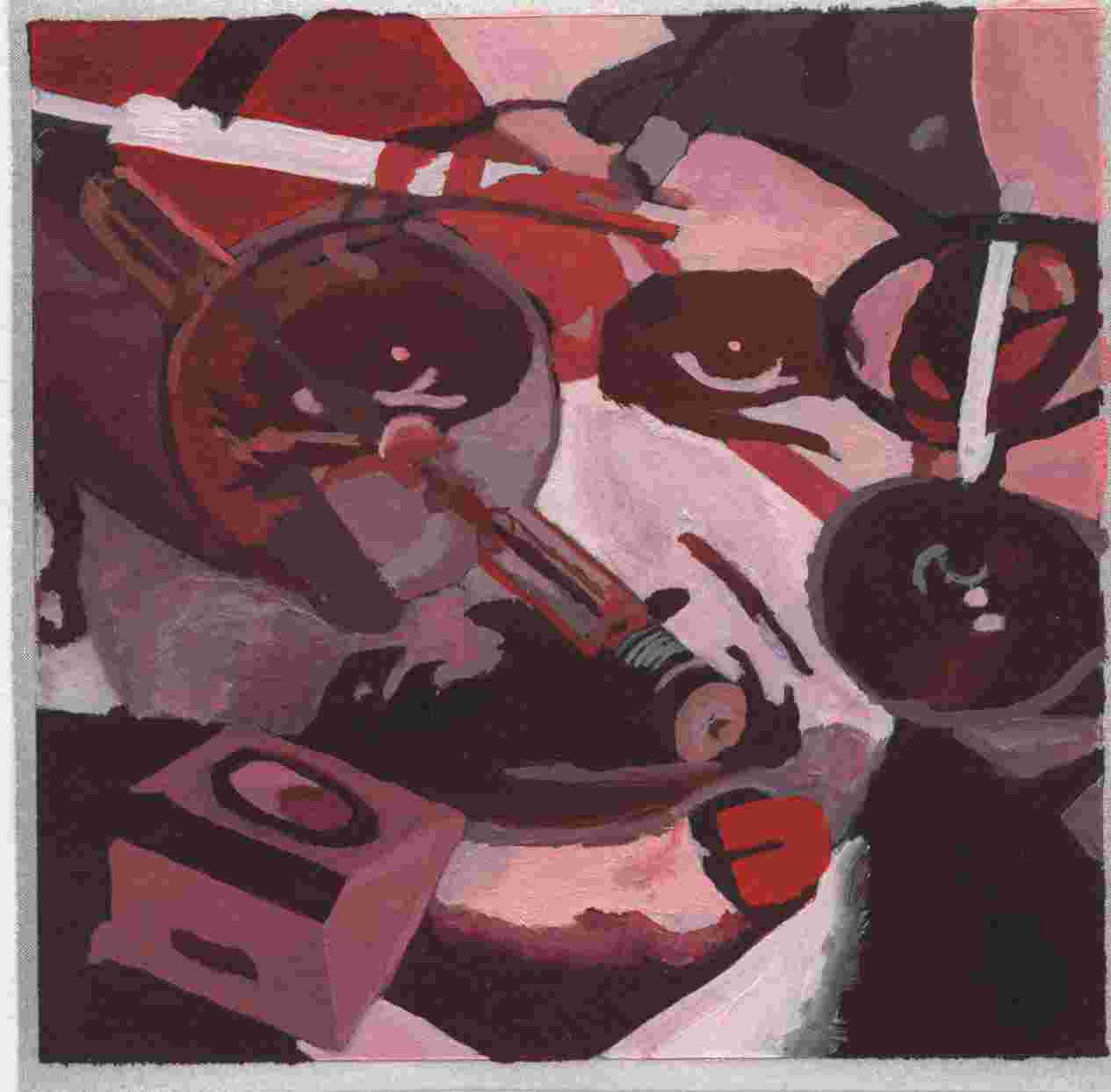
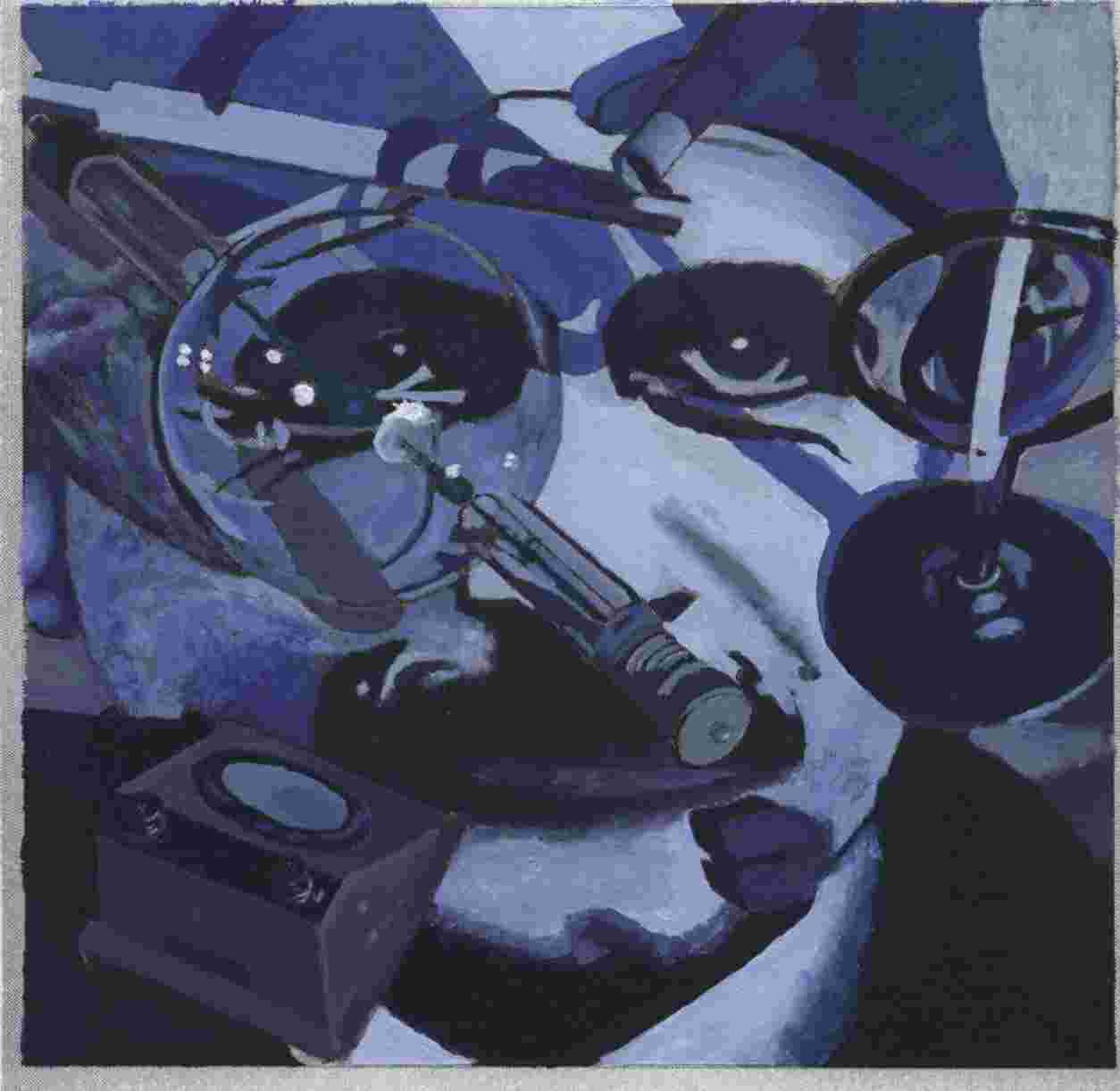
The next painting is also monochromatic but Reverse Value (below, left); compare its digitally inverted image (below, right).
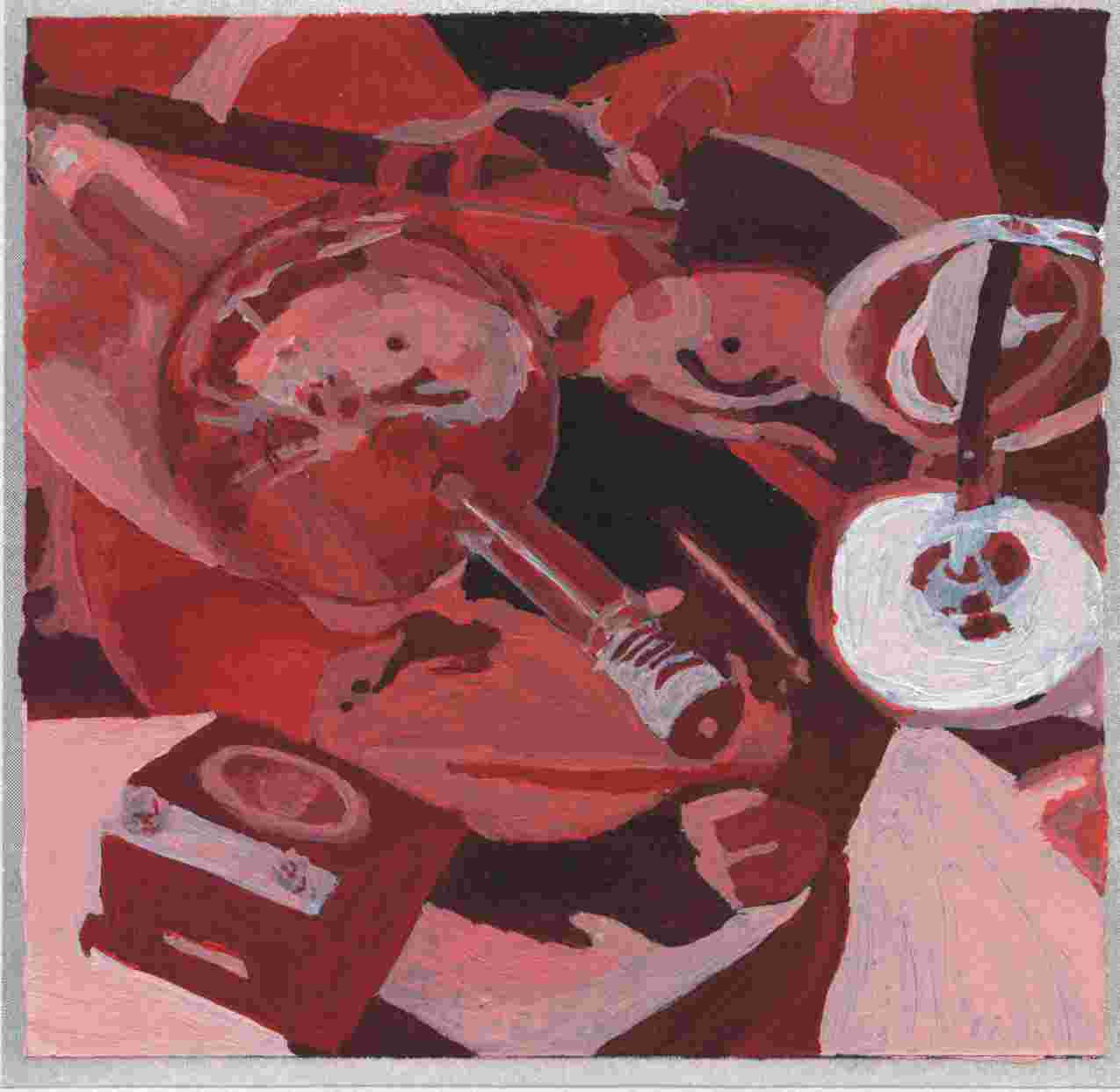
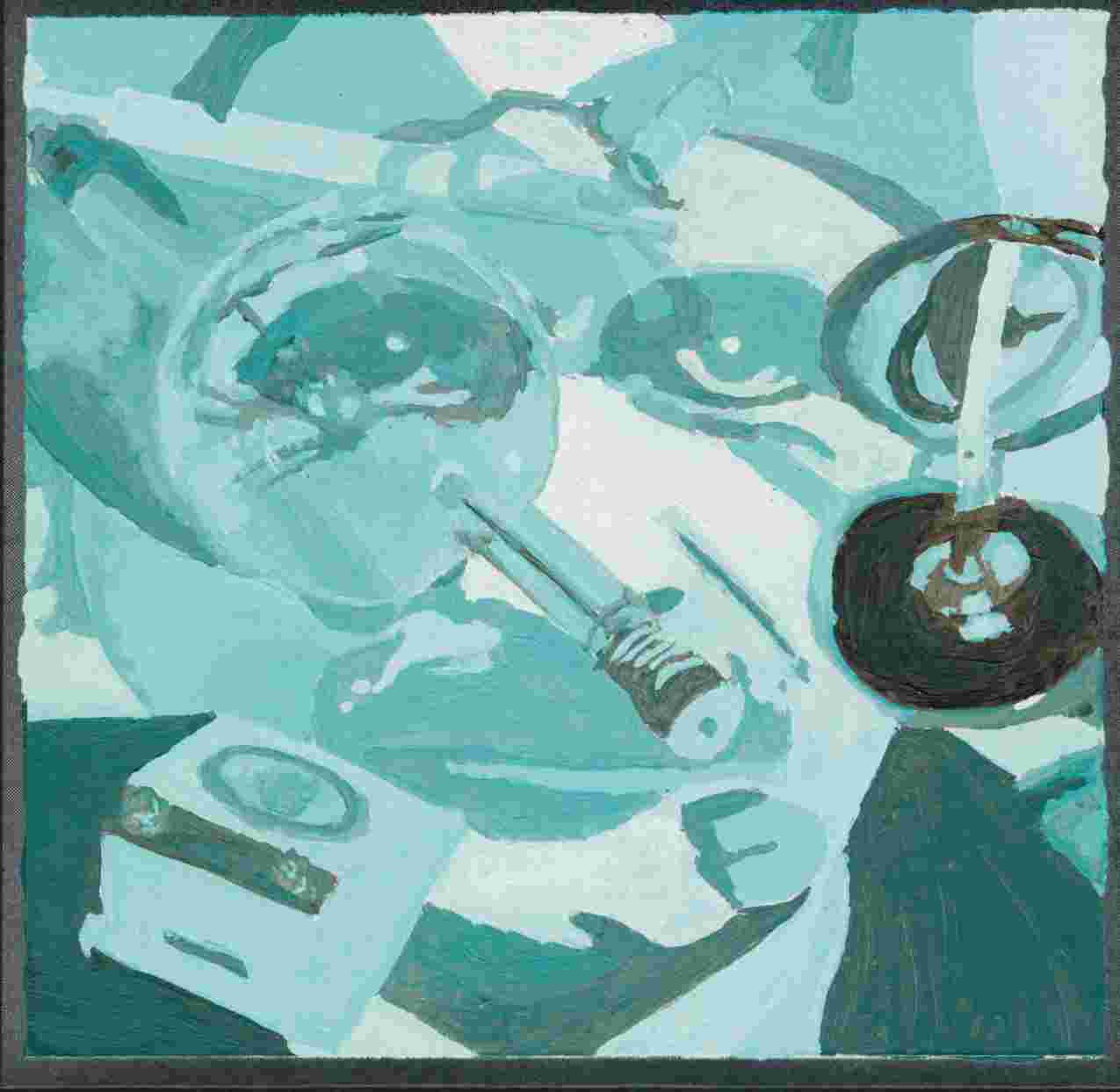
In Frozen Value (below, left) the painting is done with all colors but at equal value, which is why the black and white scan (below, right) of the image is nearly uniformly gray.

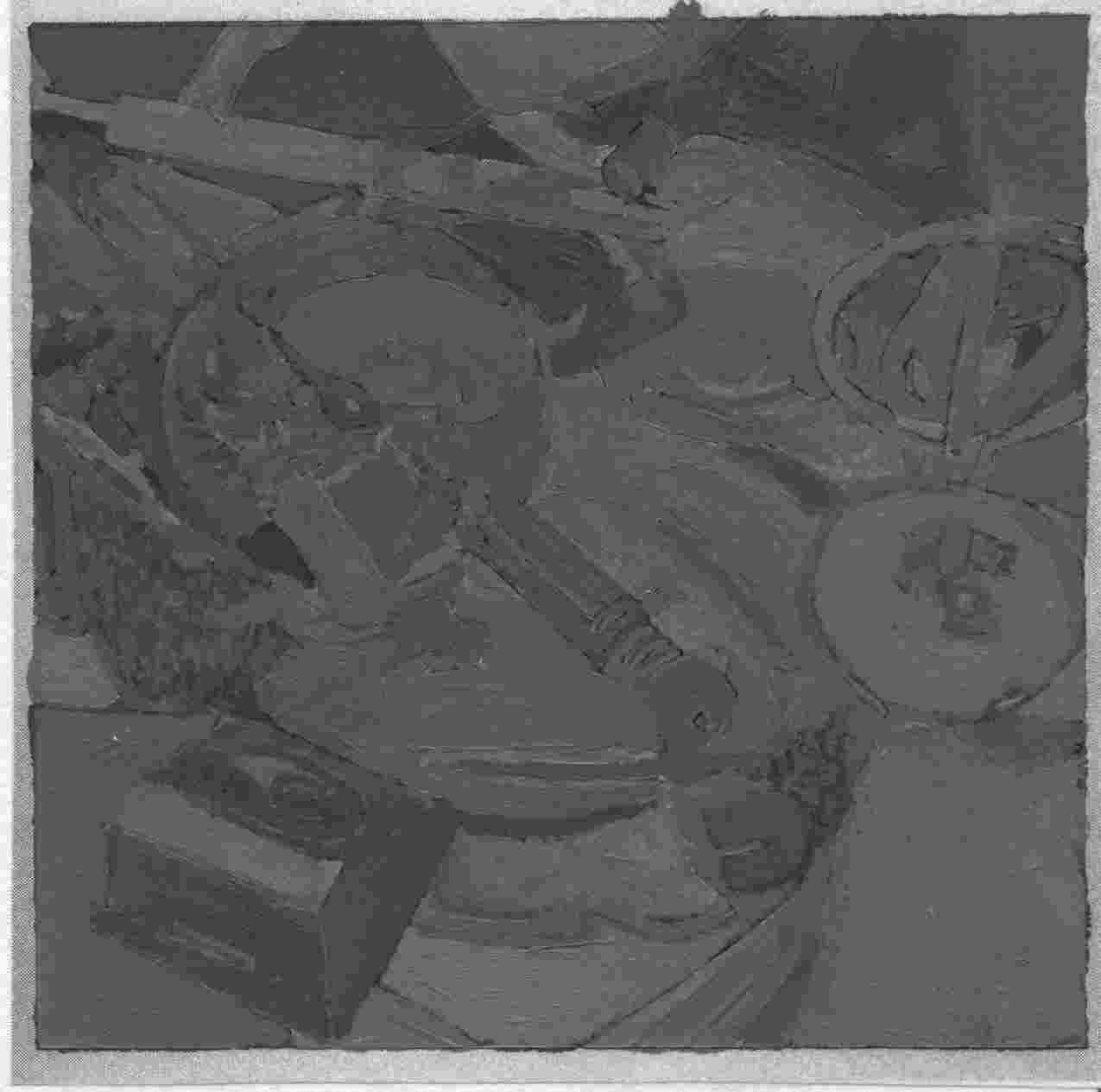
Compare the above with using all colors but selecting them according to their value, as with Full Saturation (below, left). Again, compare with the black and white scan (below, right).
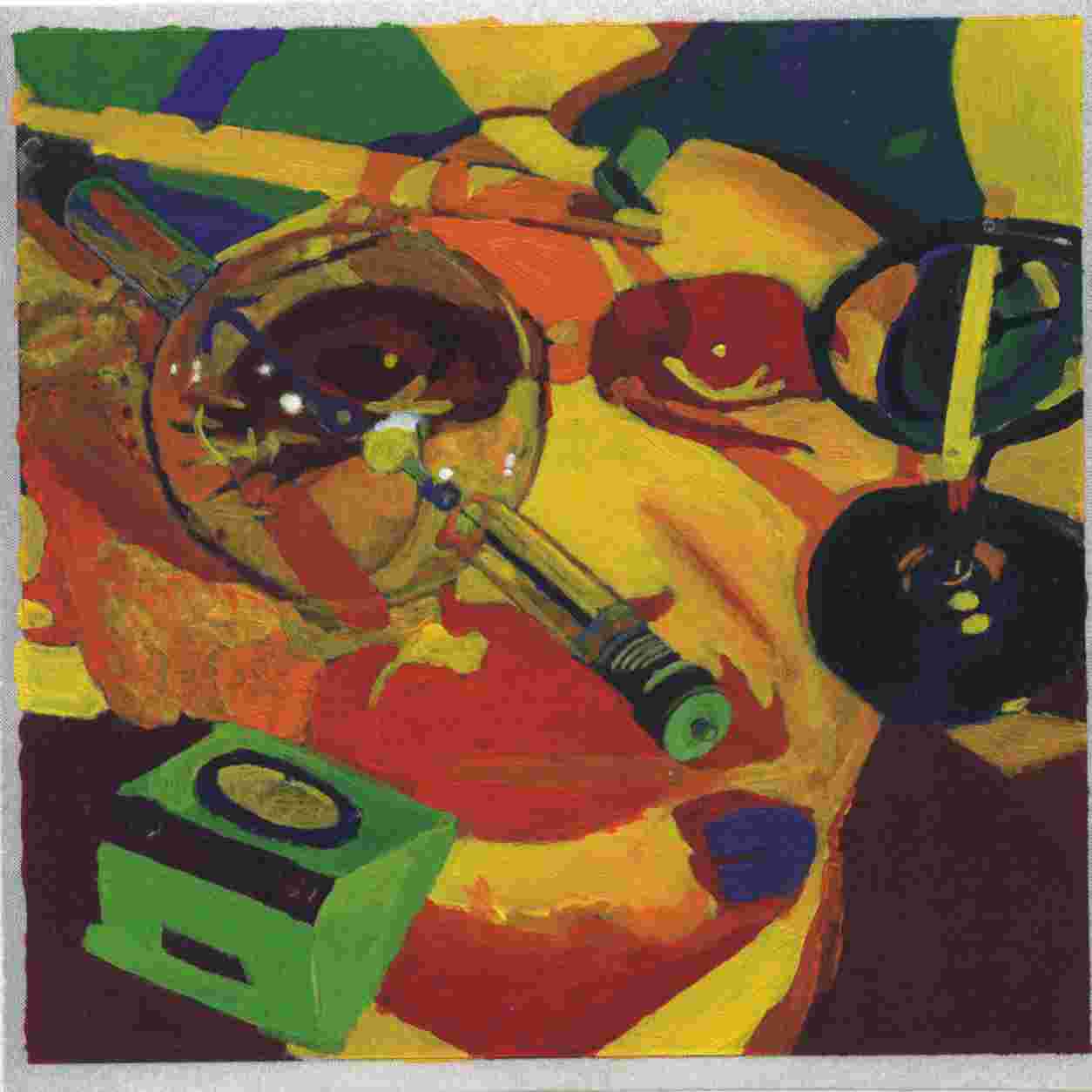
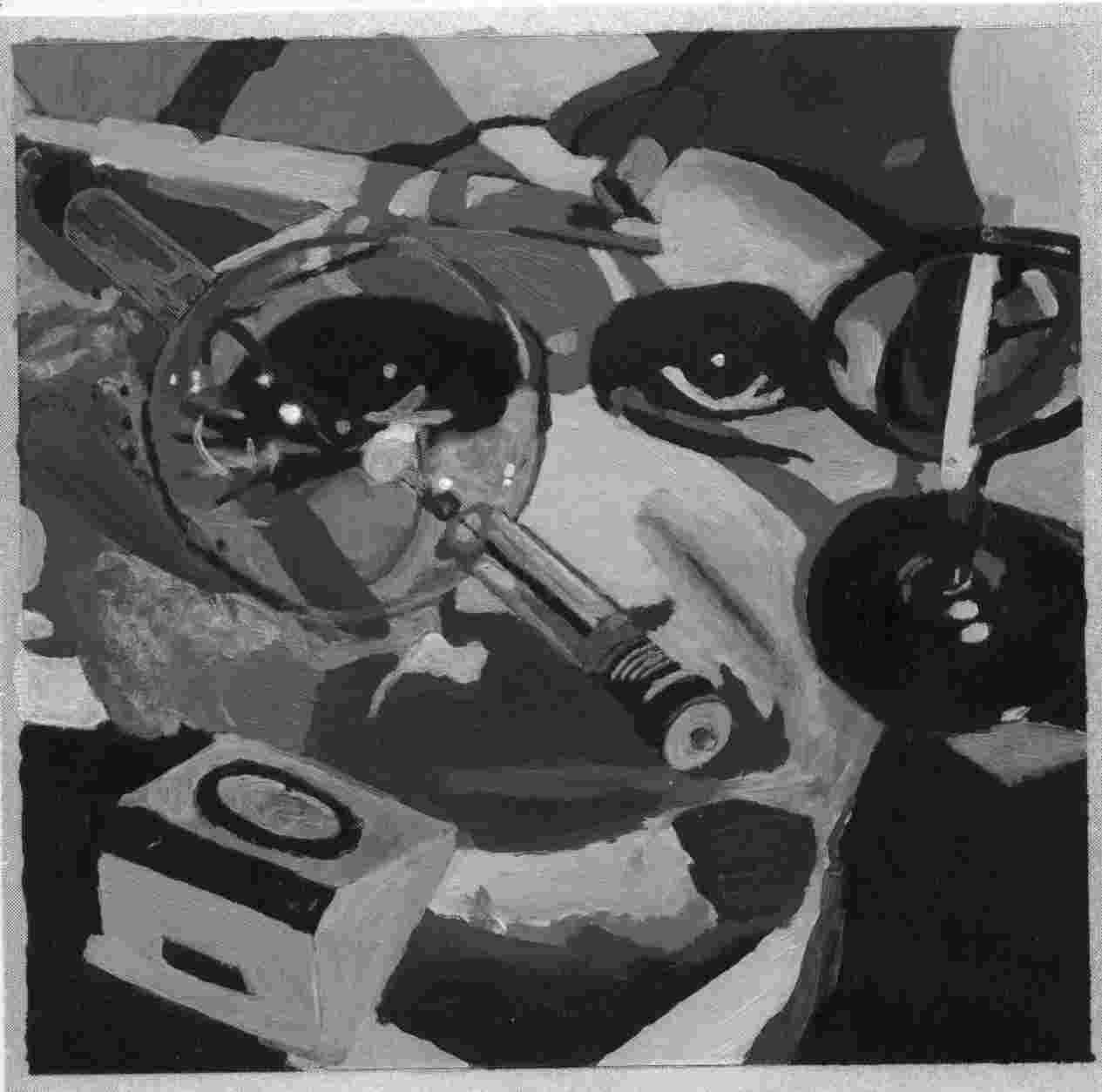
The next two paintings are High Key (below, left), a style favored by the Impressionists, and Low Key (below, right) , a style favored by Renaissance painters. Obviously, I'm no Monet or da Vinci.

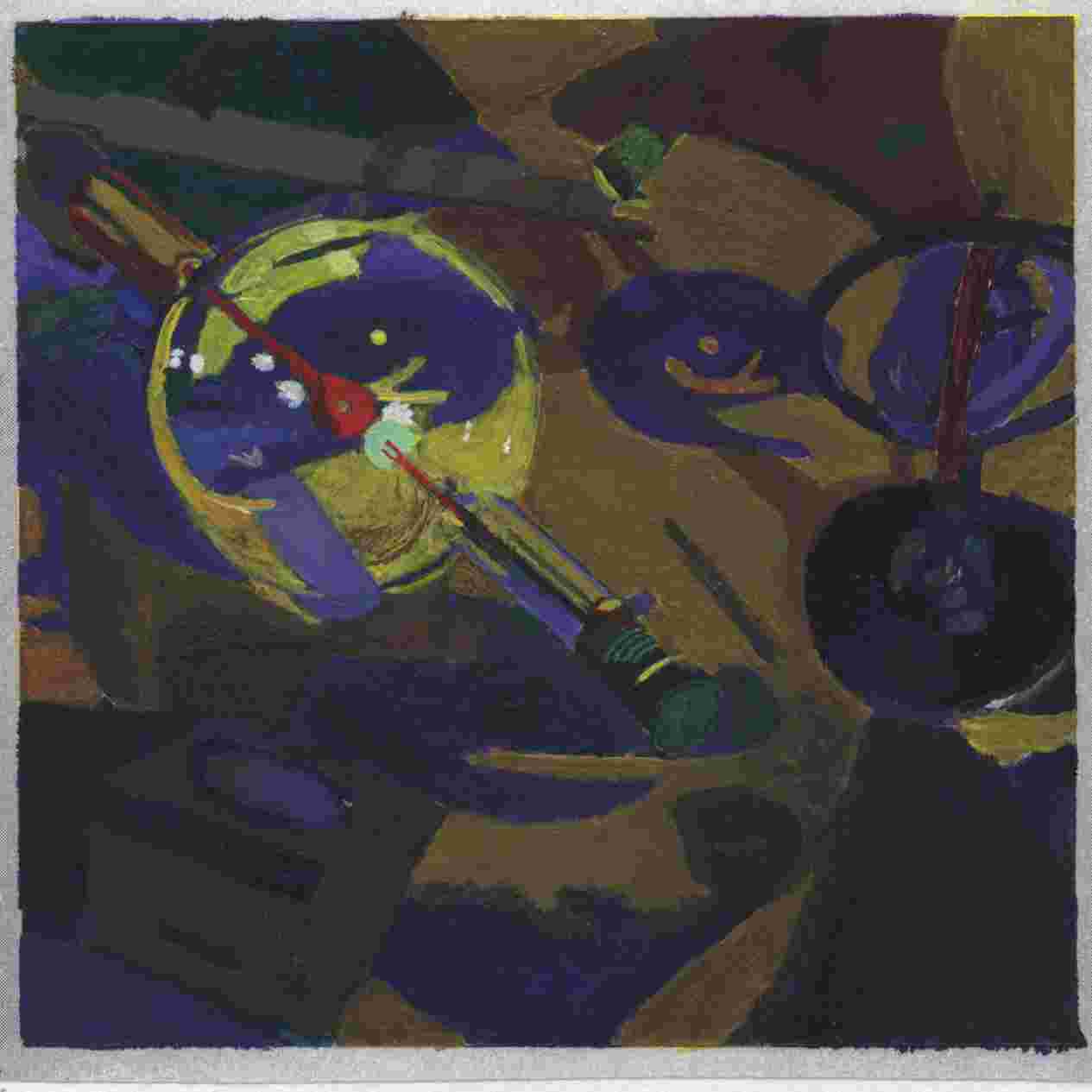
Colors on opposite sides of the color wheel are known as complements. They can be used for a jarring effect, as in Pure Complements (below, left), or to create accents, as in Split Complements (below, right)
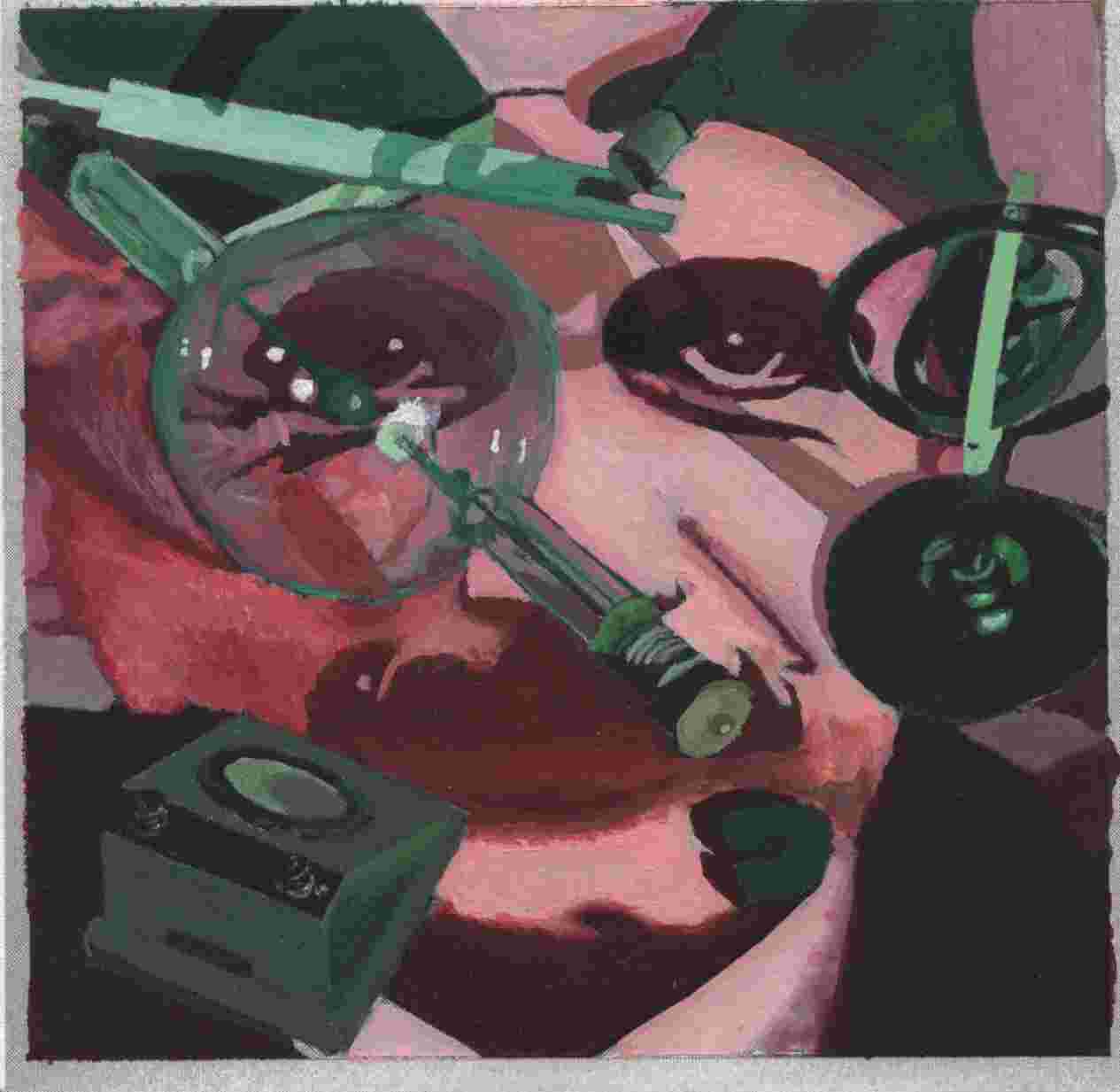
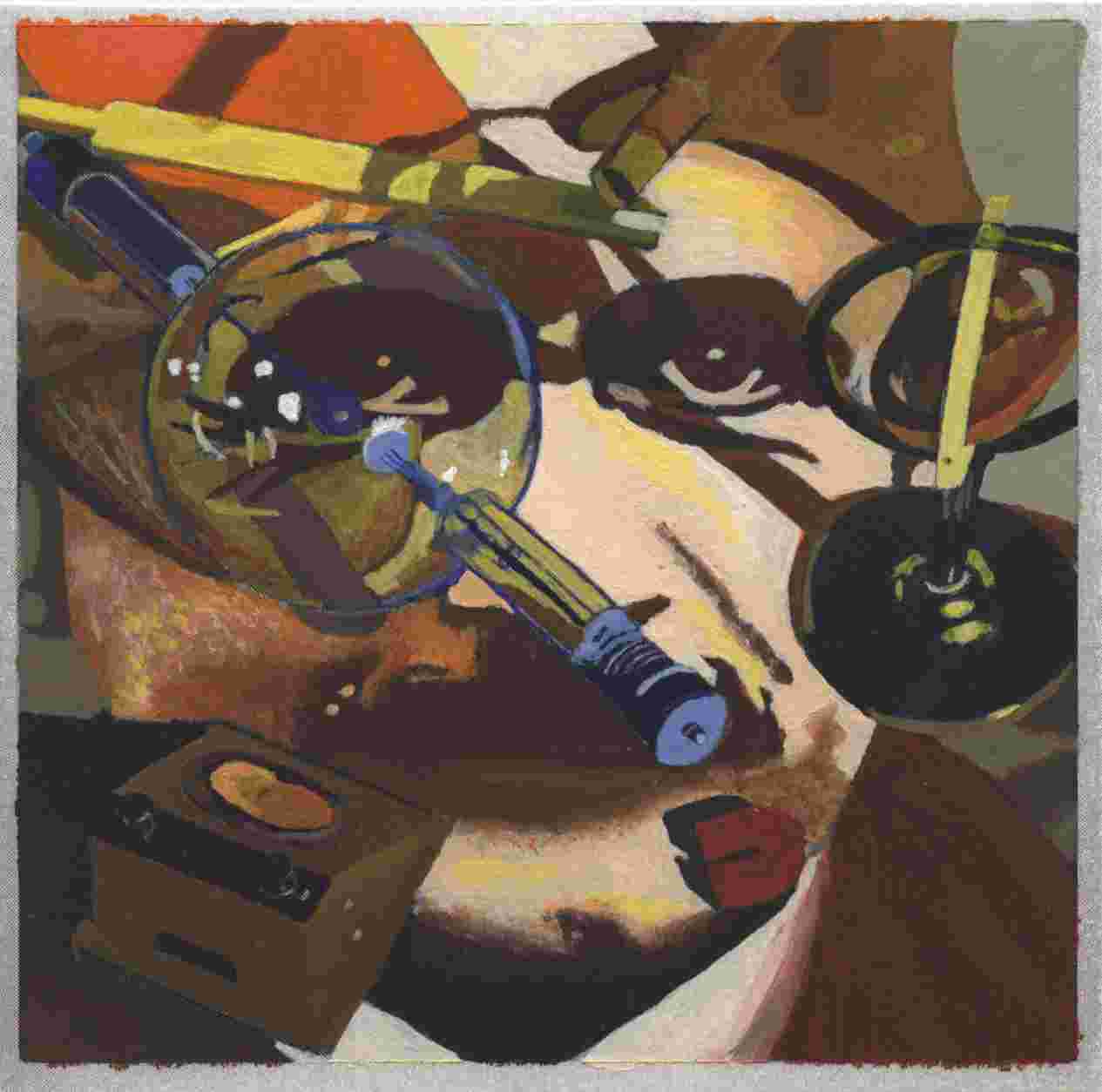
Finally, you may compare the above with the original photo reference, shown below.
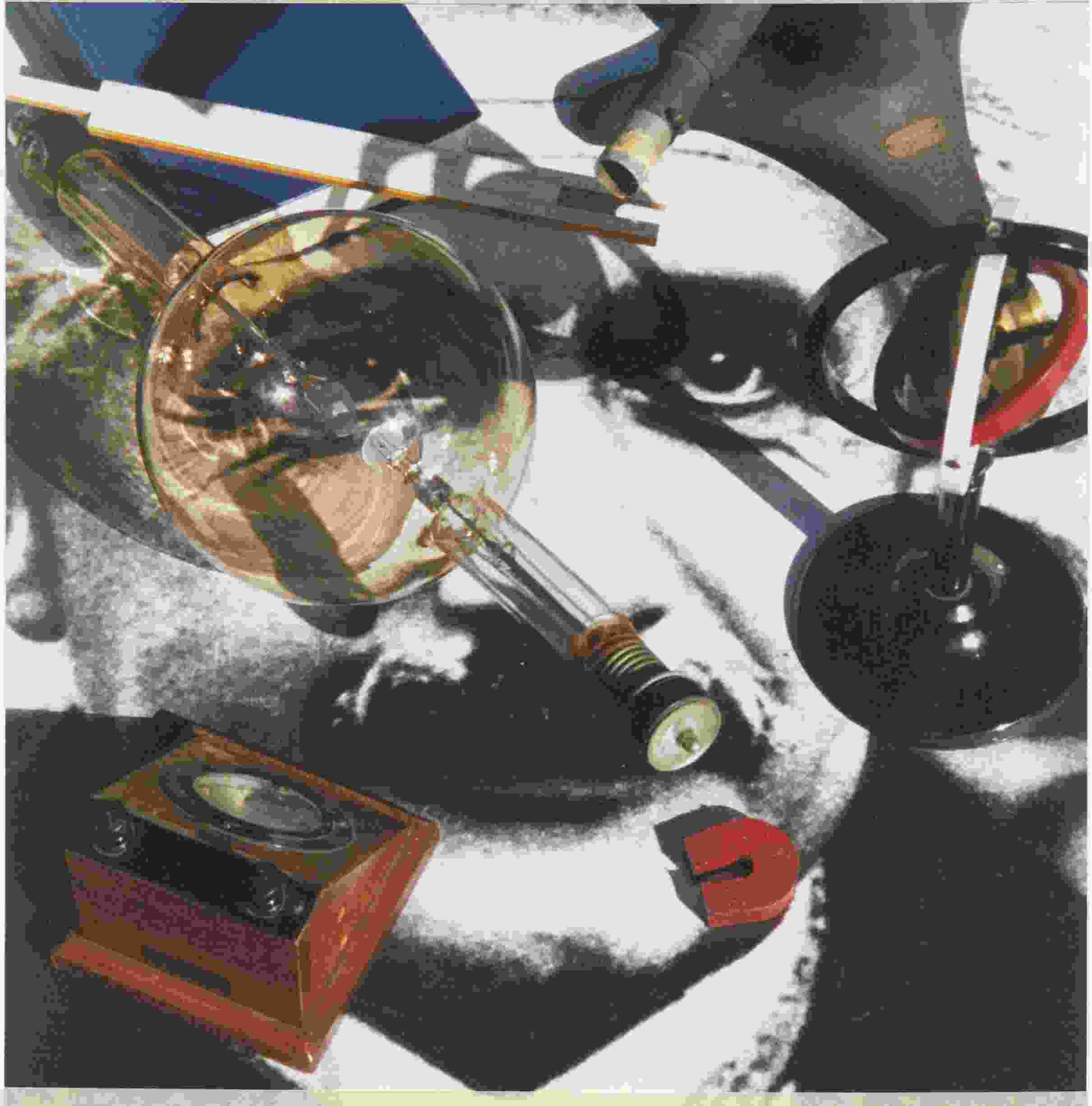
In case you don't recognize them, the items in the still life (clockwise from the top) are: spectrometer (telescope tube and base); gyroscope; small magnet; dial ammeter (meter for measuring current); large x-ray tube; slide ruler resting on a book.
Images on this page are copyrighted and not in the public domain.